View current page
...more recent posts
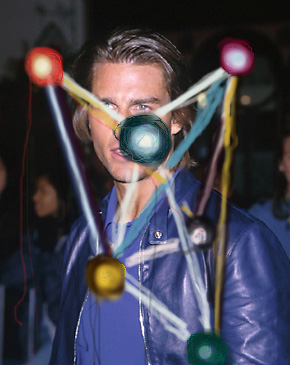
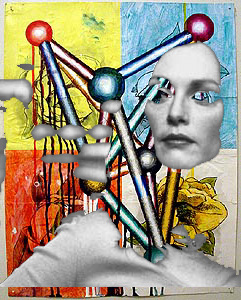
Magnolias 3. screenfull found the post facto pop culture reference in an art-for-art's-sake (or pseudoscience's sake) meditation. Speaking of the actor who shall remain nameless, this unfrozen caveman blogger just saw Rain Man for the first time. Cruise the auteur (whoops, I said it) stands, in movie after movie, for the thoroughly mediocre concept of the "heel who learns the healing power of love." Pardon us while we barf. In my version of Rain Man, Charlie wins the custody fight with the K-mart cracker doctor, hires his own minder and puts Dustin Hoffman on the payroll of what swiftly becomes a thriving commodity futures trading consultancy. Apropos of the freaky scene in the elevator, Cruise's girlfriend sleeps with both of them. Collectively, but only collectively, the Babbitt bros are Warren Buffett--individually they are just two dudes with problems.
Drx from Bodenstandig 2000 responds here to some recent bluster on this page, offering among other things a pretty fine argument that one cannot abuse commercial digital products:
The discussion about using or abusing instruments is not really fitting to digital instruments i think. You might take a saw and cut through a violin and record that, at some point in history that would have been cool and considered being an abuse of an instrument. To really abuse it you might want to drive nails in a wall with a violin and not even record that. -- But to say one is abusing digital instruments is in my opinion only a way to make yourself look cool. Abuse=Punk=h4rdc0re!! There is no such thing as turning the knobs in the wrong direction on a sampler. Not to follow the instruction manual or failing to reproduce demo songs is not abuse. It's just that after some time another sound becomes acceptable to listeners. You might consider what i do to the YM2149 chip is abuse, but in fact, thru exploiting all the things it can do, i bring it to blossom and beauty. It's all inside the machine. Maybe some things were not even considered by the constructors of the chip, but it is still there. And a sampler can just store any sound, so to put there as many different ones as possible seems natural to the materiality of the instrument. Not doing so is misunderstanding of the machine. Digital artefacts can be brought to a different context. Nintendo hardware, more closed source than anything, can be freed and brought to everybody, not only developers paying licenses. (Yes, maybe 15 years later, but still!) A chip that was intended to control the printer and make keyclick sounds can become a musical instrument. (YMROCKERZ!!) Powerpoint can be used to make art. All this is not abuse, it shows us the great potential of software. Nothing breaks, only more things appear.Thanks. As mentioned earlier, Drx represents the absolutist position, which might be summarized as:
1. Data wants to be free, except when being hoarded from frienemies in the computer music scene. (*smiley emoticon*--this addresses an earlier statement of Drx's in the same thread.)
2. As Robert Pirsig argued in Zen and the Art of Motorcycle Maintenance back in the '70s, everyone has the means to hack the machinery that controls our lives given time, patience and the right holistic frame of mind, except those who can't figure it out.
But we shouldn't be so quick to relinquish the term "abuse" when talking about what artists do to anything. Clearly a continuum exists from "Listen, I made a weird squawk" to "something the manufacturers never intended" to "total irrevocable damage to the product." Nothing breaks? Tell it to a musician friend of mine whose digital keyboard crashed during a live gig when he hit two mute keys simultaneously. He emailed the manufacturers (smart hacker dudes in a small company) and they said, "You're right, that's a bug and will be fixed in version 1.4." And the ymrockers reference reminds me of the recent New Museum group show where several screens were frozen (not theirs, and warning, dyspeptic rant). As long as computers and digital gear fail naturally, and they do all the time--they're stinky with failure--it should be possible to speak of counter-abuse coming from artists, or "use of abuse." All that said, Drx's status-quo-disrespecting statement offers a jolt of pure inspiration.
An earlier post on Drx is here. See also this discussion on whether code knowledge is relevant to making art with digital tools. Before getting sidetracked on the term "abuse" I wrote a few posts back about "undiscovered uses or misuse of products by musicians": "misuse" referred to Samuel Delany's argument in Mark Dery's Flame Wars that hiphop culture was oppositional to rather than merely consuming of "sci fi" electronic products.
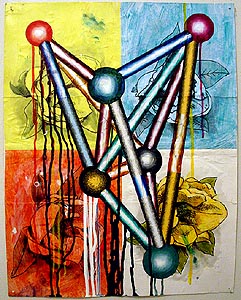
Magnolias, 1994-1996, ink, acrylic, and collage, 21.5 x 17 inches. I plan to post more historical work while going about the time-consuming business of teaching myself some new musical chops.
20 years ago Roger Corman's New World Pictures cut 30 minutes out of Hayao Miyazake's post-apocalyptic eco-fable Nausicaa of the Valley of the Wind and released it as Warriors of the Wind, with Star Wars-conscious packaging and English-sounding character names. Nausicaa--actually named for a minor Greek character in Homer--became "Princess Zandra" and the monstrous insects called Ohmu became "Gorgons." The film has just been re-released by Disney on DVD, largely untampered-with. It's much better, still visually stunning, but here are some initial quibbles:
--Watch the Japanese language version first. I've only caught a little of the English, but Patrick Stewart as Lord Yupa sounds intrusively Patrick Stewart-like, and Nausicaa has the same irritating Valley Girl voice all American dubs of teenage anime characters seem to have. Also you really don't want to hear Uma Thurman using anachronistic words like "weasel" in a story where the tone is grimly neo-medieval.
--Among Miyazake's most frightening and impressive creations are the fearsome God Warriors--bioengineered giants capable of setting off nuclear explosions, who scoured the Earth in the "seven days of fire," a cataclysm the planet has still barely recovered from in Nausicaa's time. The manga reveals these beings as literal (albeit artificial) Gods with the power to "arbitrate" the affairs of humans. Much force resides in the phrase "God Warrior," which is how every version and much anime scholarship has translated it. Until now--Disney calls them "Giant Warriors." I'm guessing this is because here in the USA we worship the One True God, who will have no other gods before him, even in fiction.
--In the original Japanese cut (and Warriors, too) Nausicaa wears flesh-colored leggings, making her look naked whenever her tunic flaps up, which is often, since she spends much of the movie piloting a kind of flying Segway called a mehve. One Scottish critic referred to her as "the film's bare-bottomed heroine." Disney has discreetly tinted the leggings pale yellow. You never know, a fundamentalist Mormon might be watching the movie and want her as a fourth or fifth wife. Also the mehve is boringly called a "glider."
More disgruntled fan musings to come. It's still a good movie.
We're still discussing Bodenstandig in the comments to an earlier post. Jonathan Brodsky has led me to do some poking into the "tracker scene" and I still have questions if anyone feels up to it. Brodsky says "the tracker (impulse, octamed, fasttracker) has become the clearest interface choice for musicians doing the proto-jungle/noise thing." A nitpick, if people are using these old school tracker programs to make current drum and bass it's not "proto-" jungle, because that means "an early or previous form of"; it's more like post-jungle, unless you mean "proto-jungle-esque" (i.e., like early '90s breakbeat techno, jungle's precursor). I know, ridiculous. My (slightly edited) response to Jonathan and standing questions for anybody:
Here's a wikipedia article and another piece on the tracker scene. Also some info on Atari chip-music editors such as the one Bodenstandig used. I'm still curious (and googling) about the interrelationship of the Atari demoscene, amigatrackers, and early rave and 'ardkore. How much was hobbyist/cultist vs real club/dancefloor breakthroughs? Also how much was actually hacked and/or open source vs just using the products companies were selling? Then or now? From the wiki article it sounds like the Akai and the tracker software were inseparable 50/50 partners in defining the "tracker" sound. Is that the same thing as "classic" breakbeat rave or breakbeat techno? The article makes "tracker" music sound like a cheesy variant--did that happen later or was tracker music always the music of hobbyists/Atari cultists? Finally, is the "tracker scene" mainly a European thing?Also, FWIW, the octamed link has a picture of Aphrodite's studio...

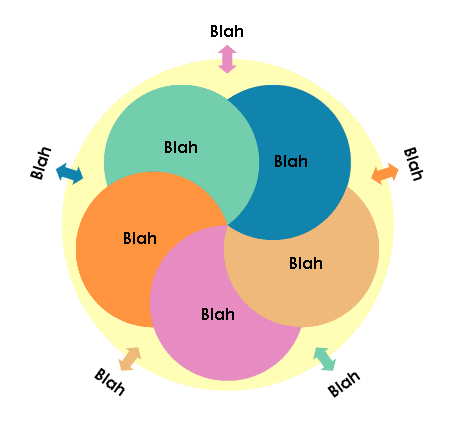
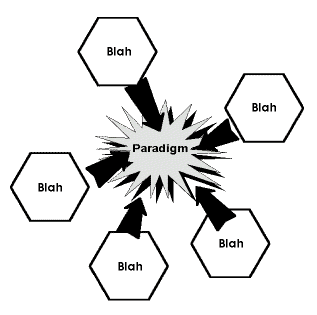
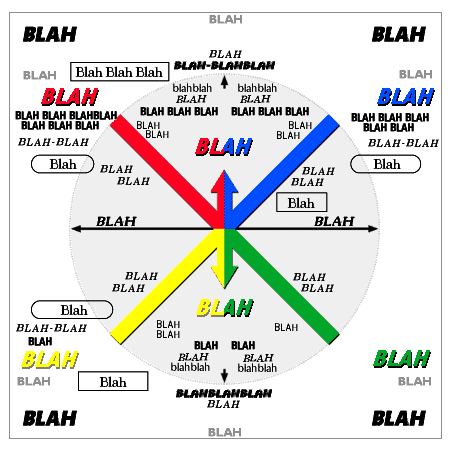
As promised, more GIFs from the mysterious http://castlezzt.net (caution: massive page load).
I hear the second night of "Low Level Allstars" (Thursday Feb 24) at Deitch was better than Wednesday, the night I attended [or I should say even better, since Wednesday was great]. I'm told the sound guy improved (I can attest that he did a not-so-good job the first night), and the speakers were put on tall stands. Also the crowd was bigger and more polite, although according to one report people were sitting down during Bodenstandig, which was definitely an up on your feet partying kind of thing. It's hard to find the right balance between sitting, listening, and partying, especially when trying to manage a typical New York gallery audience of people there to make the scene, yak, and network for their all-important careers.
For an example of what I'm talking about, check out the .mp3 of this John Parker/jenghizkhan performance at the Front Room in Brooklyn. He's playing some great gritty electro-noise stuff and you can hear the schmoozers just schmoozing away. This is no comment on his music--it doesn't matter who's playing here, music and performance are just a sort of background for everyone's personal movie. As I've mentioned before, this is partly because New York has an embarrassment of riches relative to other scenes and people are just blase, but there is also a high oink factor.
In the comments to my second post on Bodenstandig, Jonathan Brodsky floats the theory that jungle (the older, purer version of drum and bass) was the product of open source software, as opposed to musicians using commercial products. Let's nip that meme right here! Here's Brodsky's comment:
I don't know about jungle originating in commercial software environs... It was my understanding that the form developed in trackers similar to the ones that bodenstandig uses, on the amiga. I know that the breakcore sound is mostly due to the tracker interface as well. which software were you thinking was the one that spawned jungle?I clarified that by "commercial software environment" I also mean to include software in so-called hardware synths and samplers, and further replied:
Rob Playford initially used a shareware sequencer called Superconductor (running on an Atari) along with an Akai S-950 sampler and DAT, around the time of 2 Bad Mice's "Waremouse." By 1993 he'd switched to C-Lab's Notator, a commercial product. (C-Lab eventually became Emagic, maker of the popular sequencer Logic.) The real breakthrough for jungle came not so much with tracking, or sequencing, as abuse of (commercial) samplers. From The Mix (1996): "[Metalheadz'] 'Terminator' tore through the scene [in '93] with a vengeance ... its manipulation of timestretching from a sampling utility into a revolutionary new sound effect (by pushing the circuitry way beyond its parameters) made 'Terminator' not just a big tune, but a seminal one for the emerging and, by this time, identifiable new scene."
Bodenstandig 2000, who performed this week at Deitch, bring terrific entertainment value to the greater but potentially somewhat boring cause of open-source, command-line principles. Combining acapella singing, furious real time keyboard playing, spastic, ironic Prodigy-style dance moves and a razor sharp ear for the nuances of various hard-pumping electronic dance genres (if only to proudly translate them into 8-bit, that is, lo fi, "chiptunes"), the duo repeatedly bowled over the audience Wednesday night. Their simultaneous video-projection of a defiantly non-graphic sequencer interface reminds you that the music you're hearing is a steady stream of numbers.
Dedication to old gear and pure hacking vis a vis current proprietary software systems in some ways recalls the rock purists of yore who insisted that only black Delta blues musicians had integrity vis a vis British cover bands, or that 3-chord garage bands always had the edge over prog rock & fusion [was it really necessary to throw out the baby of Canterbury and electric Miles with the bilge of Kansas and Spyro Gyra?]. This kind of essentialism has Occam's razor logic on its side but can also grow stuffy and cult-like. Bodenstandig aren't stuffy, they're funny as hell, but their website(s) are defiantly retro with all-black screens, a simulated UNIX interface, and occasional hectoring about nerdy things like the "right" way to resize images.
Their music and live show present the clearest, most hilarious, most persuasive argument for the absolutist position, but there are other positions. Instead of braving the minefield of newer musicmaking software with all its copyright limitations, commercial agendas, hidden manipulations of the artist, and potential for quickly dating cheesiness, they hold the line for older, more clearly articulated concepts of integrity. This means either no change, or that music must backtrack and take the road not taken, into a parallel universe where there is no Microsoft, no Apple, and all musicians know code.
In defense of commercial software, the communities that develop around a particular bit of gear or program (e.g., Emagic, Native Instruments) apply open-source tenets in the form of forums and message boards where the software developers get ideas and criticisms from users, and then modify products in the next version. This isn't just corporations faking the Linux model; the rethinking process is ongoing and happens at internet speed. Ultimately chores of creation and fabrication are apportioned to the people who do each best, as opposed to demanding that every creator be both artist and scientist. Also, much of the music that Bodenstandig so adeptly imitates (especially jungle) originated in a commercial software environment, often through undiscovered uses or misuse of products by musicians. Truly original, innately 8-bit music would probably take years to assimilate and would not necessarily please crowds.
UPDATE: One point of clarification: by "commercial software environment" I also mean to include the software in so-called hardware synths and samplers. For further discussion and clarification, please see the comments and later posts.
